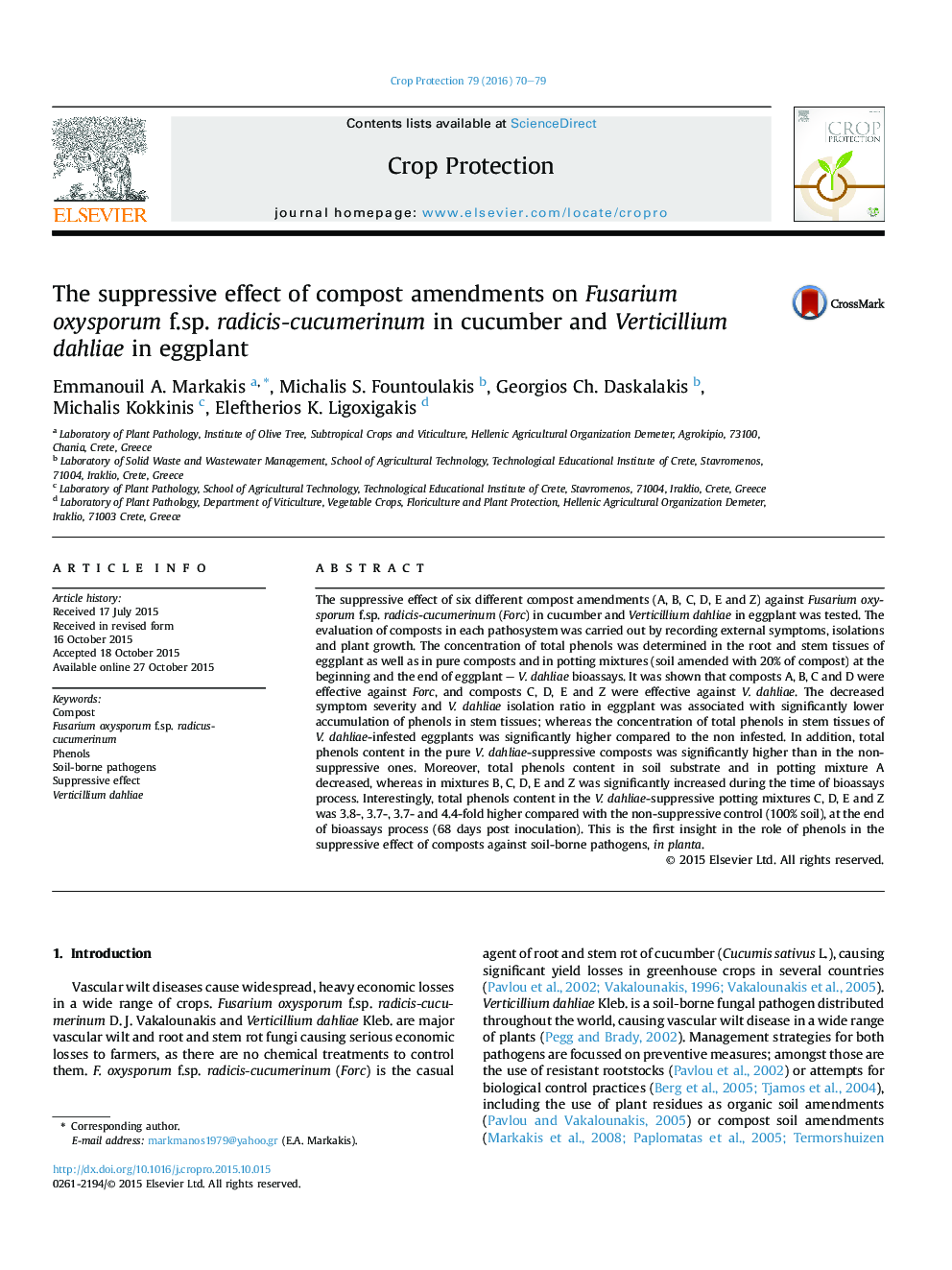| کد مقاله | کد نشریه | سال انتشار | مقاله انگلیسی | نسخه تمام متن |
|---|---|---|---|---|
| 4505615 | 1624308 | 2016 | 10 صفحه PDF | دانلود رایگان |

• The suppressive effect of six composts against soil-born pathogens was tested.
• The role of phenols in the suppressive mechanism was investigated.
• Most compost treatments decreased significantly disease symptoms.
• Phenols accumulation was associated with V. dahliae invasion in plant tissues.
• Phenolic content in composts was associated with Verticillium wilt suppressiveness.
The suppressive effect of six different compost amendments (A, B, C, D, E and Z) against Fusarium oxysporum f.sp. radicis-cucumerinum (Forc) in cucumber and Verticillium dahliae in eggplant was tested. The evaluation of composts in each pathosystem was carried out by recording external symptoms, isolations and plant growth. The concentration of total phenols was determined in the root and stem tissues of eggplant as well as in pure composts and in potting mixtures (soil amended with 20% of compost) at the beginning and the end of eggplant – V. dahliae bioassays. It was shown that composts A, B, C and D were effective against Forc, and composts C, D, E and Z were effective against V. dahliae. The decreased symptom severity and V. dahliae isolation ratio in eggplant was associated with significantly lower accumulation of phenols in stem tissues; whereas the concentration of total phenols in stem tissues of V. dahliae-infested eggplants was significantly higher compared to the non infested. In addition, total phenols content in the pure V. dahliae-suppressive composts was significantly higher than in the non-suppressive ones. Moreover, total phenols content in soil substrate and in potting mixture A decreased, whereas in mixtures B, C, D, E and Z was significantly increased during the time of bioassays process. Interestingly, total phenols content in the V. dahliae-suppressive potting mixtures C, D, E and Z was 3.8-, 3.7-, 3.7- and 4.4-fold higher compared with the non-suppressive control (100% soil), at the end of bioassays process (68 days post inoculation). This is the first insight in the role of phenols in the suppressive effect of composts against soil-borne pathogens, in planta.
Figure optionsDownload as PowerPoint slide
Journal: Crop Protection - Volume 79, January 2016, Pages 70–79